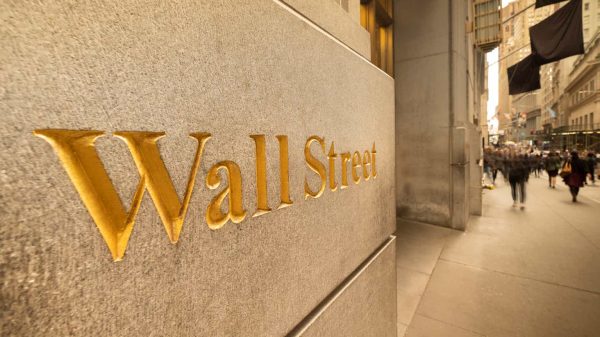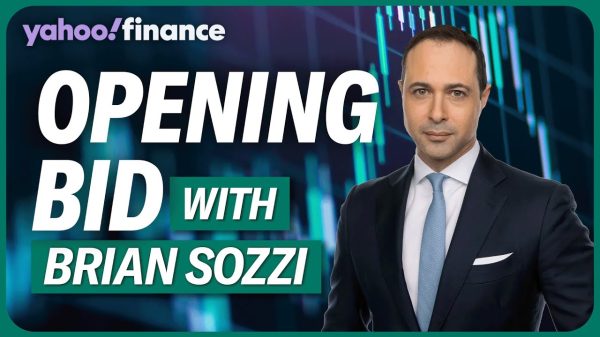When REI announced plans in April to close one of its best-performing stores, a location in downtown Portland, Ore., the sporting-goods retailer became the latest to cite shoplifting and higher crime as among the main reasons.
The company told MarketWatch that it spent more than $800,000 on extra security through last year, and over the last two years had replaced windows with security glass, installed better lighting and established 24/7 security — in the store when it was open and perimeter patrols when closed. Still, a representative said, the store had 10 burglaries in 2022, and a car slammed through a store entrance on Black Friday. Shoplifting and crime weren’t the only issues: The company also said that it had outgrown the store’s constrained layout.
However, some employees also said that none of those issues were new, and wondered whether there were unspoken reasons.
By one former employee’s account, workers had been asking for more store space for years, amid difficulties handling bikes and boxes in a tighter space, and said theft wasn’t exactly rare. And some employees, for this story and others, have noted that efforts to unionize at the store had gained momentum not long before the announcement of the planned closure, set for early next year.
“The reasons they were stating for closing just felt really convenient, because those cited problems have been problems for years,” said Chesley Lindsey, a former employee who said she was one of the bigger advocates for unionization at the store.
Megan Behrbaum, the REI representative, said “it is not accurate to connect this store’s closure to union activity.” And she said the store had been dealing with “unsuccessful lease renewal negotiations with our landlord” and that the investments in security weren’t sustainable longer-term.
But in shutting the Portland location down, REI joined a handful of other big chains closing stores due to what they say is surging crime and theft. Taken together, those closures have raised questions about the factors behind the closures, and the ways crime can be overplayed or underreported amid an avalanche of headlines over the past two years about rampant heists and brazen criminal activity at retailers.
Industry groups have said the issue has cost retailers tens of billions of dollars, with some analysts blaming stretched police departments and what they say are lax crime policies. However, other analysts say crime data is imperfect and risks distorting the response from policymakers, and point to pandemic disruptions to the way people work and shop.
Some executives have walked back complaints about the matter. Some chains have continued to open stores in areas where they once shuttered locations. And a smaller number of people and stores, in some cases, can lead to outsized statistics.
Retailers like Starbucks Corp.
SBUX,
and Walgreens Boots Alliance Inc.
WBA,
have shuttered locations in larger cities, citing theft, dangers to employees, drug use in restrooms, an acute homelessness crisis and what executives have described as a surge in shoplifting. Target Corp.’s
TGT,
chief executive said Wednesday morning that his company expects to lose $500 million more this year than last due to inventory “shrinkage,” much of which he blamed on theft.
“The unfortunate fact is violent incidents are increasing at our stores and across the entire retail industry and when products are stolen, simply put, they are no longer available for our guests who depend on them,” Target Chief Executive Brian Cornell said during the company’s earnings call on Wednesday. “And left unchecked, theft and organized retail crime degrade the communities we call home.”
More stores nationwide have locked products behind protective glass, at times irritating shoppers. More store aisles have been armed with monitors, and more items tagged with security sensors. Home Depot Inc.
HD,
began selling power drills that don’t work unless a cashier activates them.
Homegrown Oregon athletic-gear giant Nike Inc.
NKE,
closed a store in Portland, citing shoplifting as a reason, and has asked for a bigger security presence there, according to OregonLive. Walmart Inc.
WMT,
also closed two stores in the area. It told the news outlet that the stores were struggling financially. But it added that there was “no single cause for why a store closes.”
“ ‘I’ve worked with crime data for long enough to know that we just don’t have data granular enough to know for sure if any of those categories are increasing dramatically.’ ”
Laura Bennett, the director of the Center for Just Journalism who has a background in data and policy analysis for criminal justice issues, said the stories on organized theft and smash-and-grab robberies project a far greater sense of certainty about crime than the numbers suggest.
“I’ve worked with crime data for long enough to know that we just don’t have data granular enough to know for sure if any of those categories are increasing dramatically,” she said.
Industry groups have sounded the alarm about organized retail theft, or stealing goods with the intent of reselling them. But even some of their own statistics on the issue show how difficult it can be to prove that point.
Last year, a survey from the National Retail Federation, an industry group, found that so-called “shrink” — or losses attributed to theft, fraud or employee error — amounted to $94.5 billion in losses in 2021. That was up from $90.8 billion in 2020. And the survey found that retailers reported a 26.5% increase in organized retail crime, on average.
However, the overall shrink rate during that year — 1.4% — was similar to the previous five years, with the gross gains attributed to overall sales increases. The survey was conducted online “among senior loss prevention and security executives in the retail industry.”
Research from Bennett’s own organization has found that in San Francisco — where coverage of theft has been aggressive, and where Nordstrom Inc.
JWN,
recently said it would close both its downtown stores — found that reported commercial robberies were on track to fall to their lowest levels in five years by the end of 2022. Reported commercial burglaries, it found, jumped more than 70% in 2020, started falling in 2021, and were set to come back to pre-pandemic levels last year.
In Los Angeles, LAPD data showed that reported property crimes ticked 4.2% higher in 2021 and 11% higher for part of 2022, according to the organization’s research. Those rates were still far below those in the 1990s.
Other looks at police department data for Los Angeles, San Francisco and Portland offer a mixed bag.
An analysis of police data by the nonprofit journalism group Crosstown LA found that robberies overall in Los Angeles for the first three months of this year fell 19% from the same period last year, and were lower than the first three months of 2019. Burglaries also edged lower, when compared to those time periods. Robberies in the city in 2022 rose year-over-year but were still lower than in 2019, the group said.
In San Francisco, reported robberies overall rose for the first four months of this year, but reported burglaries and larcenies fell, according to police data. Reported burglaries also fell last year, while robberies and larceny rose. And in 2021, robberies and burglaries fell from the prior year. In Portland, police data show a 14% year-over-year jump in reported robberies and a 17% increase in burglaries in 2022, although robberies crept slightly lower and burglaries slightly higher through the first fourth months of this year compared to that period in 2022.
But Bennett also said that something as simple as a store deciding to begin reporting theft to police can cause the stats to balloon.
“That can create a massive swing in what we see in the data, but nothing actually changed in the real world,” she said.
“ ‘Retailers feel like prosecutors and law enforcement won’t do anything. Prosecutors and law enforcement often feel that retailers won’t show for court or supply the evidence that’s needed. So I see a lot of finger-pointing.’ ”
Still, Karl Langhorst, an adjunct instructor at the University of Cincinnati’s school of criminal justice who has worked with retailers on loss prevention, said he’s seen an increase in theft at stores and more acute employee anxiety over theft.
He also said theft often goes unreported at retailers for a few reasons. Insurance, for one, generally doesn’t cover shoplifting or organized retail theft. He also said that retailers — where workers might be unfamiliar with the court system or might not have enough evidence — and law enforcement don’t always work with each other sufficiently.
“Retailers feel like prosecutors and law enforcement won’t do anything,” he said. “Prosecutors and law enforcement often feel that retailers won’t show for court or supply the evidence that’s needed. So I see a lot of finger-pointing.”
The conversation surrounding crime and retail theft in cities follows pandemic restrictions that led to the rise of hybrid work and more online shopping, in turn reshaping population and commercial hubs in cities. And it follows a surge in prices that have strained consumers. Smartphone video technology and social media have made it easier for any single shoplifting incident to go viral.
Criminal-justice reform advocates say that industry-group surveys tend to only sample a few dozen retailers, anonymously, and say that data isn’t available for third-party review. Executives at large retailers, nonetheless, have said the increase has been dramatic.
Cornell, Target’s CEO, has made shoplifting a regular focus. In November, he said the chain had “seen a significant increase in theft and organized retail crime across our business.” At that time, Target’s chief financial officer, Michael Fiddelke, said that shrink had reduced its year-to-date gross margin by more than $400 million compared to the prior year, and said he expected it would lower 2022 gross margins by more than $600 million.
Target’s 2022 sales rose 3% to $109 billion, with gross margin of 23.6%. That was down from 28.3% during the prior year due to steeper markdowns, higher shipping costs and greater inventory shrink. Walmart
WMT,
CEO Doug McMillon, in December, told CNBC that prices could rise and stores could close if theft weren’t addressed.
Still, Walgreens, in January, walked back its earlier complaints about theft, and said shrink had fallen.
“Maybe we cried too much last year when we were hitting numbers that were 3.5% of sales,” Walgreens
WBA,
Chief Financial Officer James Kehoe said of the company’s shrink levels in January. “We’re down in the lower twos, call it the mid-2.5%, 2.6% kind of range now. And we’re stabilized.”
He added that the security companies the chain had been using were “largely ineffective,” and the company was using more law enforcement personnel.
“ ‘Maybe we cried too much last year when we were hitting numbers that were 3.5% of sales.’ ”
Other data show that a small number of people and stores can drive statistics. In New York, police said, nearly a third of the city’s arrests for shoplifting in 2022 involved only 327 people, according to the New York Times. That report also said that 18 department stores and seven pharmacy-chain locations comprised 20% of complaints.
Others suspect some retail executives could be overplaying crime to pressure lawmakers for more security, and using the issue as cover to pull out of communities — some where access to essentials is limited — where store sales are coming up short. And outside of REI, some labor activists have suspected other store closures were actually acts of retaliation.
As more employees at Starbucks coffee shops began voting to form unions last year, the chain last summer said it would close a handful of its more than 15,000 stores, mainly in larger cities, due to safety and security issues. But some union members said the moves were an attempt at union-busting. Starbucks, which has opened new shops in some of those cities, has vehemently denied those allegations.
Pew Research has found that “Americans tend to believe crime is up, even when the data shows it is down.” But Bennett said that the headlines are helping to shape policy debates over ways to crack down more harshly on theft, raising questions about those policies’ effectiveness and how much they might worsen racial disparity. She also said that theft takes more forms than what usually gets discussed.
“The types of property crime that we pay the most attention to as a country are really narrow,” Bennett said.
“We look at burglary. We look at particular types of theft of goods. We look at car theft,” she continued. “We do not look at a whole bunch of other types of theft, like minimum wage violations and overtime violations that are happening literally in the same store.”
Read the full article here













